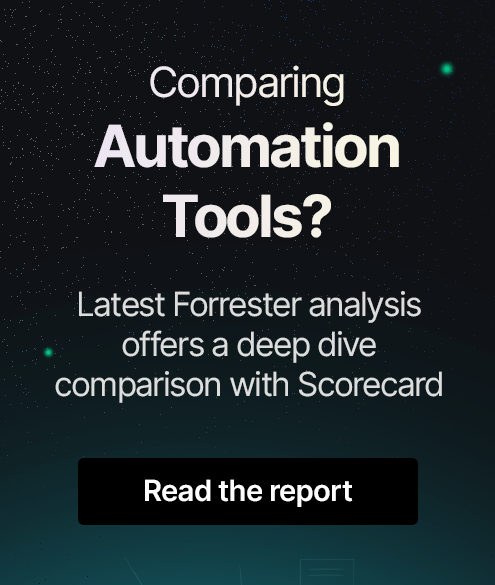Top 10 BDD Testing Tools In 2025
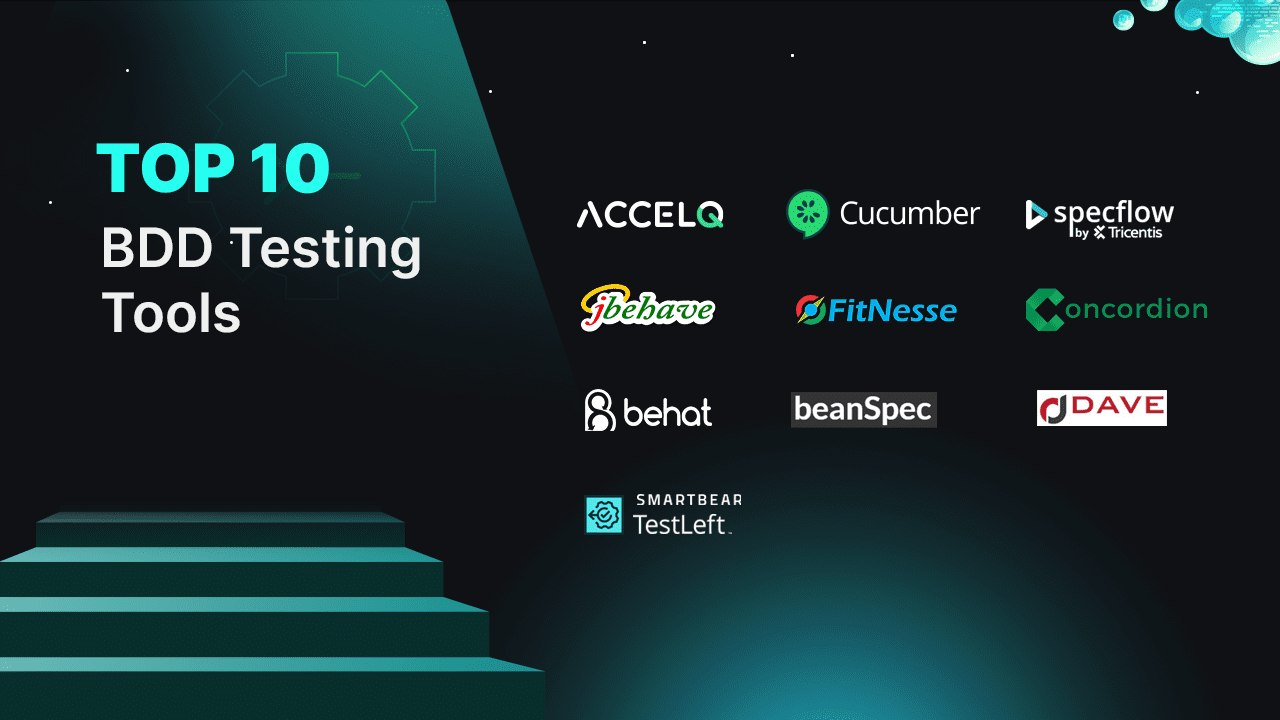
BDD testing is an Agile approach to software testing where testers write test cases in plain language for people without technical expertise to understand. BDD testing aims to increase collaboration between organization teams. Behavior driven development tools are vital for defining and testing application features using programming languages. These tools can effectively communicate and align software functionalities for business needs. They are revolutionizing software testing by helping to collaborate among team members and enable effective test automation.
This blog will cover the top 10 BDD testing tools that stand out in the industry. Each tool has unique features essential for modern software development and testing. Join us as we explore these tools to improve testing workflows.
10 Best BDD Testing Tools
1. ACCELQ
ACCELQ is an AI-powered continuous test automation platform. It supports Behavior-driven development (BDD), which allows the writing of tests using reusable commands and auto-generating test cases based on test data. This platform can pre-build process flows that emulate the underlying app behavior. It can perform test automation without custom frameworks. ACCELQ Live, a revolutionary approach to business assurance in a multi-cloud packaged app environment.
Features:
- The platform’s analytic runtime engine intelligently adapts to unexpected application changes, ensuring reliable test execution.
- A design-first approach uses artificial intelligence technologies for robust element identification.
- ACCELQ’s Universe is an application visual blueprint that drives automation across the quality lifecycle, focusing on business processes. It allows for test scenario development with predictive analytics for smarter decision-making.
- Integrates seamlessly with Jira and Jenkins, ensuring test automation remains integral to the development lifecycle.
- An intelligent, connected test repository redefines traceability to offer clear visibility across the testing lifecycle.
- A unified testing flow enables end-to-end test validation across platforms, browsers, and devices.
Pros & Cons of ACCELQ
- Simplifies test automation by enabling BDD scenarios in plain English
- Comprehensive test coverage to validate end-to-end user behavior in BDD scenarios
- Ensures reliability & efficiency by streamlining test scenario creation & updates
- No cons
2. Cucumber

Cucumber is an open-source BDD testing tool. It was initially written in Ruby but now supports different programming languages. This tool uses Gherkin to write test scenarios.
Features:
- This tool uses Gherkin keywords (Given, When, Then) for clear and structured test scenario writing.
- Seamlessly integrates with testing frameworks like JUnit and TestNG to ease the incorporation of BDD into existing environments.
- This tool supports parallel testing to speed up the process for large and complex software projects.
- Reporter plugins generate reports on passed and failed test scenarios.
Pros & Cons of Cucumber
- Ruby, Java, Python, and more programming languages are supported
- Aligns testing with user requirements for better business focus
- Cucumber scenarios serve as living documentation, adapting to code changes
- Requires installing Ruby's development kit
- Understanding BDD principles can be difficult for new users
- Managing a large test suite requires a clear naming convention
3. Specflow

SpecFlow is a BDD framework for .NET. It helps developers to write feature files and automation code in their favorite IDE using C# and .NET methods. The framework also combines test case documentation with test automation results.
Features:
- Gherkin helps technical and non-technical teams collaborate by promoting clear understanding and reducing confusion.
- An online Gherkin editor of this framework writes, shares, and downloads feature files with your team.
- CI/CD tools like CloudBees and GoCD integration are supported for secure workflows and real-time change tracking.
- This framework merges test cases and automation results for quick reporting.
Pros & Cons of Specflow
- An online Gherkin editor simplifies editing and sharing feature files
- Separates test cases from automation, reducing test maintenance effort
- Provides documentation and automation results in a single platform
- Gherkin syntax has a steep learning curve for beginners
- Maintaining Gherkin scenarios requires technical expertise
- Projects outside .NET may face integration challenges
4. JBehave
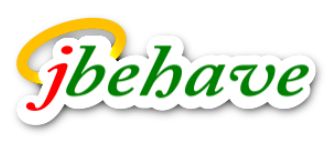
JBehave is a Java-based framework that supports BDD. It is ideal for Java-based enterprises to specify and run text-based user stories. User stories are scenarios that explain what will happen when a particular behavior is encountered while using the application.
Features:
- Custom parameter converters bind textual steps to Java methods with auto-conversion of arguments.
- This framework integrates with JUnit and other annotation-based unit test frameworks, and tests are runnable via IDEs.
- User stories enable concurrent execution with thread counts and use metadata for easy filtering and organization into story maps.
Pros & Cons of JBehave
- Strong Java support, making it ideal for Java-based applications
- Tests are written in a clear, narrative format for better readability
- Customizable test execution and reporting
- Gherkin can be challenging for defining complex use cases
- Requires Java knowledge to build test cases
- Tedious to maintain tests
5. FitNesse

FitNesse is an open-source testing tool. The wiki pages created with this tool are run as tests. This tool tests the application to verify it meets its specifications, creating a feedback loop between them.
Features:
- The rich-text editor supports table creation and modification, making test scenarios more structured and readable.
- Validate project requirements with the actual software implementation.
- The tool offers an easy setup by providing a downloadable Java JAR file that can be used locally or on a server.
Pros & Cons of FitNesse
- Adaptable across tech stacks with many programming language support
- Integrates automated testing into the development workflow for efficiency
- Simplifies testing setup with a Java jar file download
- Requires a learning curve for new users unfamiliar with the tool
- Advanced reporting may require additional plugins
- Complex & time-consuming to maintain tests for large projects
6. Concordion

Concordion can be used to write and manage automated acceptance tests in Java-based projects. Active software specifications define feature behavior for implementation and verification. It is a specification tool that hides scripting activity inside Java fixture code.
Features:
- This tool links specifications with color-coded status and provides a hierarchical index.
- Tables concisely display examples of application behavior and ease the comparison of results.
- This tool can add screenshots and log details to report what test checks are going, making debugging easier.
- It can trace the stack trace when exceptions occur by clicking a button inside the specification.
Pros & Cons of Concordion
- Group tests into suites for better management
- Can specify tests for front-end components and functionalities
- Can test server-side components and functionalities
- No data generators to generate input data for testing
- Users must know HTML for advanced test scenarios
- Integrating with some frameworks may need extra effort
7. Behat
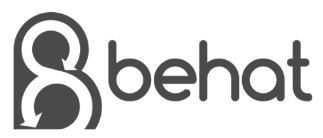
Behat is an open-source behavior driven development (BDD) framework primarily designed for PHP. It's a tool that enhances software delivery through communication and test automation. Behat focuses on developing the right system by enhancing requirements communication.
Features:
- This tool integrates with PHP frameworks, follows coding standards, and supports static analysis.
- A powerful extension system can adapt to various testing needs and scenarios.
- The tool enhances software quality and maintenance by working with static analysis tools.
Pros & Cons of Behat
- Offers Symfony and other PHP frameworks integration
- Test cases focus on defining system behavior
- Well-documented for PHP ecosystems
- Limited to PHP, restricting usage outside PHP projects
- Requires PHP expertise for creating test cases
- Challenging to set up a test environment
8. BeanSpec

BeanSpec is a Java-based BDD tool that operates difficult specifications within its framework. It is designed for Java IDEs like Eclipse and NetBeans, making it ideal for Java development. BeanSpec simplifies complex behavior specifications with a clear narrative style.
Features:
- This tool employs declarative language to specify and manage complex component behavior.
- Integration with Java IDEs is supported.
- An internal reporting feature generates reports at the end of test execution runs.
Pros & Cons of BeanSpec
- Handles complex specifications in an easy-to-understand narrative style
- Ideal for Java projects with seamless integration into popular Java IDEs
- Provides built-in reporting to summarize test execution and find issues
- Restricted to Java, limiting compatibility with other languages
- Requires a learning curve for users new to BDD concepts
- Managing specifications is challenging for large systems
9. JDave
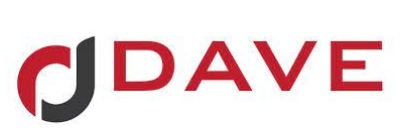
JDave is a BDD framework that works with JUnit in Java environments. Unlike Cucumber, It acts as a specification engine to illustrate class behavior through scenarios. Thus, JDave is a better tool for developers focused on behavior-driven testing.
Features:
- Efficiently runs in Java IDEs like Eclipse through JUnit integration, making it ideal for Java developers.
- This framework uses JMock2 for mocking and Hamcrest for matching, enabling flexible expressions of intent in behavior-driven specifications.
- Streamlines writing test cases for behavior-driven specifications to enhance clarity and developer productivity.
Pros & Cons of JDave
- Can test front-end & server-side behavior
- Integrates JMock 2 as a mocking framework to improve test flexibility
- Supports integration with Java IDEs for a smooth development experience
- No data generators to generate input data for testing
- Slightly challenging to learn due to its syntax for new users
- Lacks advanced features for handling complex testing scenarios
10. TestLeft
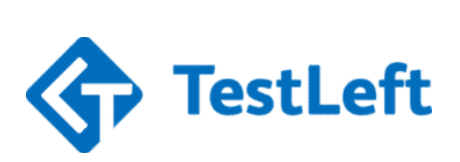
TestLeft is a functional user interface testing tool designed for advanced testers. It is known for supporting BDD methodologies. This tool helps teams confirm application quality within their development environment.
Features:
- Advanced object recognition allows quick and accurate functional testing.
- Built-in methods, templates, and unit testing frameworks enhance integration with the DevOps ecosystem.
- Detailed test reporting and analysis features enable quick debugging and effective stakeholder communication.
- Supports a shift-left testing approach to run functional tests based on Gherkin requirements with popular BDD frameworks.
Pros & Cons of TestLeft
- Uses Gherkin language to create clear, understandable test scenarios
- Test UI elements in developers' IDE for quick feedback and early issue detection
- Provides a shared language for testers to define user behaviors
- Requires initial learning if you are unfamiliar with BDD concepts
- Challenging to handle very complex application behaviors
- Difficult to maintain test scripts for large-scale applications
How To Choose BDD Test Automation Tools
Every team has a different set of needs depending on their project specifications. Yet, some determining factors to check when looking for BDD test automation tools are:
- Language compatibility.
- Integrations with tools in your technology stack.
- Collaboration is needed based on the size and scope of the project.
- Organization needs.
- Cost compared to the benefits of the tool.
Conclusion
The BDD testing approach supports many tools for different programming languages and platforms. Of the above range of BDD tools, ACCELQ doesn’t need a custom framework, while other tools support Ruby and .NET frameworks. Each tool improves the development process by requiring minimal programming skills and automated testing.
ACCELQ is an easy-to-use, no-code test automation tool. It is a great tool for BDD, helping business users to write action logic in plain English. Contact our team today to learn more about our solutions.
Discover More
 Top 5 Salesforce Automation Testing Tools In 2025
Top 5 Salesforce Automation Testing Tools In 2025
Top 5 Salesforce Automation Testing Tools In 2025
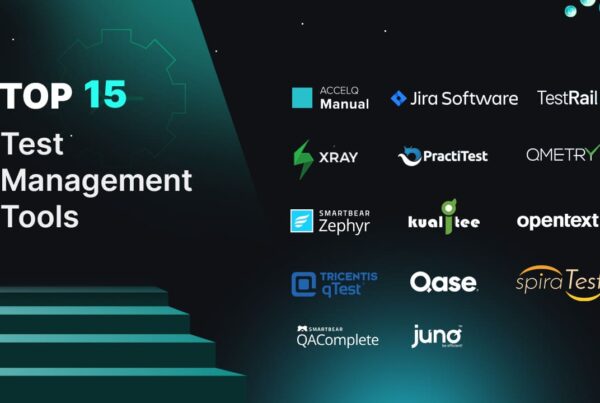 TOP 15 Test Management Tools In 2025
TOP 15 Test Management Tools In 2025































